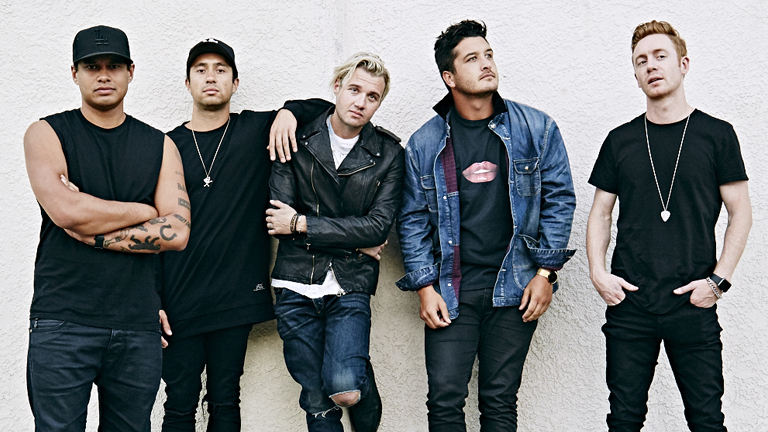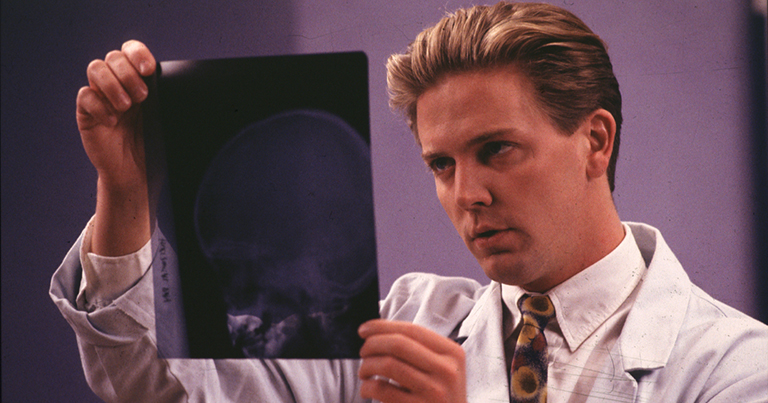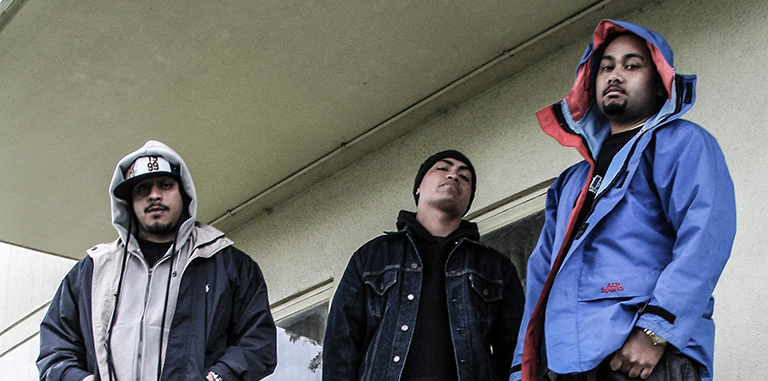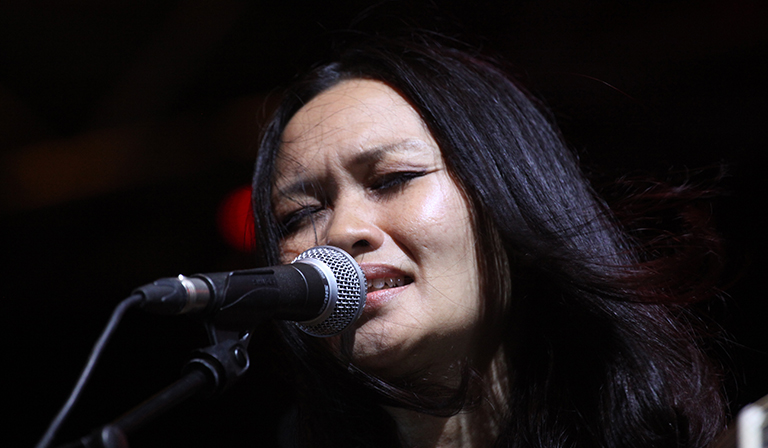DON’T STREAM
IT’S OVER
Charting the rise and fall of the Kiwi hit factory

Ben Campbell and Nathan King remember the exact moment their band Zed made it. It was a February afternoon in Christchurch and they were riding high on the success of their latest release Glorafilia, which had just entered the top 10 on the NZ singles chart.
The year was 2000 and they were one of three bands playing The Melt festival at Hagley Park, part of a council-run summer concert series.
“We were the support act,” recalls Campbell. “There was a fanbase up the front that just went crazy. There was a hysteria whereby at the end of the gig, we had to jump in the van and speed away from backstage with probably 100 kids chasing after us and hitting the sides of the van windows and rocking the van. It felt like Beatlemania,” he laughs.
It was a breakthrough moment for Zed, who clocked up 10 top 40 hits between 1999 and 2004, when the band decided to split and go their separate ways.
But it wasn’t just Zed that took off that summer. The New Zealand music industry was entering a renaissance that would see a record number of local acts take over radio playlists and enter the top 40 charts.
Between 2000 and 2010, a staggering 324 New Zealand singles entered the top 40. By comparison, the seven years since have seen just 141 Kiwi tracks reach that same milestone. This year to date, only seven local songs have made it into the charts – and six of those were by Lorde.
So what changed? The answer is long and convoluted. It involves changing music tastes, consumer behaviour, funding and, most significantly, the rise of streaming. But before we get stuck into all that, let’s jump back and examine the rise of the Kiwi music boom.

It’s hard to pinpoint quite when the Kiwi music resurgence began, but by the year 2000, the tide was firmly rising. That year saw 12 Kiwi artists enter the top 40. The following year that number rose to 20 and in 2002 it went up to 26.
New Zealand on Air (NZoA) head of music David Ridler, who worked for now-defunct radio station Channel Z at the time, attributes the change to some key breakthrough acts in the late 90s – specifically Supergroove, Bic Runga and The Feelers.
“They were everywhere. That made the record companies go, ‘there’s something here’. And then the arts package and NZoA investment in New Zealand music increased and radio started to change. There was also a new breed of radio programmers coming through who were passionate about New Zealand music.”
Zed frontman King agrees, saying Runga and The Feelers kickstarted the movement. By the early 2000s, he says, attitudes had changed.
“There was a sense of national pride welling up with our music. A sense of ‘we can do this as well as anyone offshore’.
"I think there was a really great batch of songwriting that occurred during that period. A lot of songs that people nowadays still sing along to and know. It was something quite special. At the time we didn’t really understand it or realise what we were in. We only got a sense of it after the fact.”
Chris Caddick was the managing director of EMI Music New Zealand at the time, which went on to sign more than a dozen Kiwi acts during that era, including Pluto, Blindspott, Goldenhorse and OpShop.
The label set a deliberate strategy to release more New Zealand music, he says, as the British-owned company tried to compete with its US-owned rivals.
“We were the weakest of all the international labels in terms of generating American hits,” he explains. “There was a greater need to have more repertoire to meet our targets. It wasn’t just coming on a plane from New York or LA each week. We felt that we might be able to generate more hits by having a great local roster.”
And they did. EMI’s artists dominated the charts and local radio for the better part of a decade, before the label’s New Zealand office closed in 2013.
“EMI as a company was the oldest record company in New Zealand, going back to 1925,” says Caddick. “Its roots were based in a strong history of recording New Zealand artists. It reached its peak in the 1960s and 70s and for whatever reason in the 1980s and early 90s, that seemed to take a back seat. We made a decision collectively that we would become more active in local music.”
The decision coincided with another key development: Helen Clark’s Labour Government.
Two years after taking power, Clark’s Government announced a major funding boost to the arts, officially called the Cultural Recovery Package, which saw an $84 million boost for the creative sector. While that was spread across the wider arts industry – including theatres, museums, dance companies and more – it included an additional $7m annual funding for NZoA and nearly doubled the amount of music funding available.
That year saw NZoA introduce its Phase Four strategy, which included a $50,000 grant for the recording and promotion of albums. Record companies had to match the investment but suddenly the music game was a lot less risky.
“It wasn’t a handout,” explains Caddick, who stresses that a lot of people never fully understood the conditions of the album grant. “It was like having a nice backstop and you knew that if you didn’t succeed, you weren’t going to go down for the count. Given that we were answerable to overseas bosses, it certainly gave us comfort.”
The reality was that artists and labels repaid the grant on a pro-rata basis. As Caddick explains, if you were successful and your album sold well, you ultimately repaid the full $50,000.
The money not only encouraged labels to invest in local artists, it gave musicians the freedom to record in quality studios and improve their production values.
Ridler explains: “If you talk to most musicians, they will say recording an album in a studio is a lot more creatively interesting than just going in for a day or two to record a single. You camp in for a week or two weeks and whole hit songs have been written in studio, in that environment.”
It wasn’t just funding that was changing. In 2002, radio stations committed to a new voluntary target system, aiming to increase the amount of local music they played from 13 per cent to 20 per cent by the year 2006.
Suddenly people were hearing more New Zealand music – and they liked what they heard.
Zed’s Campbell recalls: “All of a sudden New Zealand music really started engaging with the general public and people weren’t just being fed American music and British music. Radio stations starting the voluntary New Zealand music targets and as a result New Zealand music was put on a level playing field with these international artists. And we were a bit more approachable for the public because we were in the country and playing gigs. There was a groundswell.”



The mid-2000s saw New Zealand music peak in terms of the number of chart entries. 2005 saw 32 Kiwi artists clock up 36 separate top 40 hits. The following year saw 36 Kiwi artists enter the charts.
Songs like Hollie Smith’s Bathe in the River and The Tutts’ K were everywhere. But physical sales were starting to nosedive as piracy became an accepted way of life for many music lovers.
Recorded Music New Zealand (RMNZ) revenue began falling from 2001, but the downward trend accelerated from 2005. Between 2001 and 2014, RMNZ’s revenue nearly halved from $120m to $66m.
That loss of revenue hit record labels hard, with redundancies at several local offices in 2004, including Warner Music, EMI and Universal Music. Sony and BMG New Zealand merged, with top executive Michael Glading just one of the high-profile casualties.
But it wasn’t just staff affected, it also affected the artists signed to their labels.
Local rap duo Misfits of Science spent four weeks on top of the charts in August 2004, with their hit single Fool’s Love. They were headed for big things - or so they thought.
“We went back into the studio and started working on the second album,” explains Yudz Moodley. “The SonyBMG merger ... that messed everything up for us, because everyone working for us, to promote the album, they were made redundant. People were on edge and they just weren't doing what we needed them to do at that point. We had to self-promo and stuff, even though we were on a major.”
That second album never eventuated for a variety of reasons, including Moodley’s personal struggle with depression.
But though record companies were downsizing, Kiwi artists kept pumping out music and the arrival of iTunes in New Zealand in 2007 made music more accessible than ever.
With the costly production of physical records no longer a barrier, more and more Kiwi artists began releasing music. In 2007 the number of New Zealand singles tracked for chart inclusion jumped to 2461, up from 1506 the previous year.
Since then, that figure has fluctuated only slightly, always staying well above the 2000 mark.
In 2008, the Global Financial Crisis hit markets around the world. But while the timing coincided with the declining fortunes of the music industry, most people agree it played only a small part in the decline of New Zealand music.
The bigger issue was that consumer behaviour was changing – as were music tastes.
After a decade of funding New Zealand albums, NZoA announced it would end the Phase Four scheme. Despite clearly delivering on its goals of creating hit records to get more music on commercial radio, there was growing criticism of the programme.
Zed’s Ben Campbell acknowledges the criticism but says on a personal level, he and the band were grateful for the support and opportunities that came with it.
“There was always controversy around them in the broader industry – but we found them really, really helpful and I’m sure the label found them really helpful as well ... It gave an injection into the industry that I think was a really good move by NZoA,” he says.
“NZoA wanted to support artists that had infrastructure around them and that were going to be able to deliver on their investment of $50K – make sure the money was spent responsibly … If you were an independent artist and didn’t have those ties to labels and infrastructure – and the ties through that to radio – then it was much more difficult for them to secure grants.”
Chris Caddick, who by that point had left EMI, was commissioned by NZoA to write a report on the scheme, interviewing more than 100 industry figures to collate their feedback.
Much of the criticism centred on the commercial nature of NZoA funding and the emphasis on commercial success ahead of creativity or diversity. There was also a feeling that too much funding went to a small group of successful artists who could afford to produce their own music.
“The criticism was largely ill-informed,” says Caddick. “It was pretty distasteful criticism, given the goodwill NZoA had generated and the tangible results it had achieved. I found it bordering on offensive but it was my job to be neutral and record and report what people were saying.”
Regardless, the consensus was that it was time for change. A new system was introduced called Making Tracks, which focused solely on the recording and release of individual tracks with less focus on commercial success or radio play.
The result was more artists had access to funding but fewer people heard their music.
As Ridler explains: “There was no funding you could spend on promotion or marketing ... We ended up with a lot of videos on YouTube that nobody watched because they weren’t promoted.”
Last year, a new funding model was launched, which aims to combine the best of both worlds. A project fund will grant artists up to $30,000 to record an album or EP, while a singles fund can grant artists up to $8000 for individual tracks.
“The thinking behind the Project Fund is that now we’ve seen revenue has reached the bottom and is coming back up again, hopefully there is some more positivity and revenue around for music companies to play with,” says Ridler. “Along with us saying ‘we can give you $30,000 co-investment, let’s back this artist and put them in a studio and create some big songs and big records again'.”
The arrival of digital downloads and MP3s had a huge impact on the industry but nothing prepared people for the next step: On-demand streaming.
Spotify launched in New Zealand in 2012 and changed the game almost instantly.
In 2013, it was included in the NZ music charts and had an immediate impact. Since then, the number of Kiwi artists to produce a top 40 single in a single year has declined from 26 to just two. Lorde and Six60 are the only Kiwis to have charted this year.
“Streaming changed things quite dramatically when it came to the singles chart,” says Damian Vaughan, chief executive of RMNZ.
Paul Kennedy, who compiles data for RMNZ puts it more bluntly: “It’s definitely hindered New Zealand music getting into the chart. The door is still open for a hit – you still get Lorde going to number one – but there’s a few new barriers for NZ acts that weren’t there before.”
Where once you just needed 1000 people to buy your single in a week, he says, now you need 100,000 people to stream your song in the same period.
“You used to have a very controlled marketplace,” explains Kennedy. “You had a certain number of singles out, stock would run out and someone else would come in. Whereas now we’re in a world where everything is available all the time. They will stick around for a long, long time. It used to be the record label would move on to their next single or next artist because the stock wouldn’t be available anymore but now they have to wait for the public to get over something. A lot of members of the public listen to the same thing over and over again and really don’t move on.”
The result is a more stagnant, less diverse chart. An issue which came to the fore when Ed Sheeran released his latest album Divide in March and claimed an unprecedented 16 spots on the New Zealand singles chart.
Ridler describes the incident as “a horrible situation” that “was awful for music” not just in New Zealand but around the world.
Vaughan and Kennedy agree it was less than ideal, although technically accurate.
Kennedy explains: “It’s a fair system in terms of the data … But whether it is the best representation of how interesting the music world is, that’s another question. That’s the battle. You don’t want to have a chart that is fascinating but completely made up. Or something that is 100 per cent accurate but no one can be bothered looking at because it’s always the same.”
The Ed Sheeran incident led to a change both here and in the United Kingdom, which now limits how many songs from a single artist can chart at any one time. It also started a conversation at RMNZ around possible new charts that reflect what’s dynamic and growing.
Those conversations are still underway but the consensus is clear: The current system isn’t quite right.
There are other hurdles with streaming that are particularly challenging for Kiwi artists. The algorithms used to drive Spotify and Apple Music rely on collating data from global user behaviour. Because New Zealand is such a small market, it’s hard for the system to pick up meaningful patterns.
That means it can’t distinguish between the likes of Six60 and Shihad, or Fat Freddy’s Drop and David Dallas. It’s all just tagged “New Zealand music”, which results in a particularly confused and disjointed listening experience.
When Lorde stormed the charts and Grammy Awards three years ago, she did so with a sound and style previously unheard of from a New Zealand act.
She and producer Joel Little tapped into a global move towards electronic dance pop and did it incredibly well. But New Zealand musicians, by and large, don’t produce that type of music.
“A lot of New Zealand musicians tend towards a more alt-indie, guitar sound,” explains Ridler, stressing that he is speaking in broad terms. “Looking at the amount of applications we get, the demand is overwhelmingly indie artists.”
Fifteen years ago, that sound was the height of cool, dominating global pop radio. Today, it is strictly out of bounds.
“I think the move away from any kind of rock influence in the mainstream pop and Hot AC [adult contemporary] radio is really key," says Ridler. "That’s a worldwide thing as well. Rock has been so out of favour for so long."
The number of Kiwi artists entering the charts may seem bleak but it doesn’t reflect the depth of talent or international success that many artists are achieving.
Yes, you all know about Lorde but there is a plethora of other Kiwis kicking goals internationally.
The Naked and Famous have more than 1.6 million monthly listeners on Spotify. Broods have 1.5 million. Newcomer Aldous Harding has clocked up more than 730,000 since releasing her debut album in May.
And all that streaming equals money. After bottoming out in 2014, RMNZ revenue is on the rise again, up $20m in the past two years. 2017 is on track to deliver another boost, with Kiwis streaming more than 5.1 million tracks in the first 10 months, up from 4 million for the whole of 2016.
“There’s definitely lots of optimism and positivity over the last few years,” says RMNZ chief executive Damian Vaughan. “There’s more money, it’s growing and it feels healthier.”
NZoA head of music David Ridler agrees, saying the industry has turned a corner.
“I do feel we’re in a really exciting time. I think we’re at the beginning of a new era. There’s some positivity back in the industry at a corporate level, which is important because they’re the ones ultimately who are going to invest. I think artistically the amount of successes that are happening, there are lots of really bright spots at the moment and a lot of really great music being made.”
But it’s not all smooth sailing just yet.
“It does keep me up at night thinking about what else we could put in place to help reinvigorate things,” says Ridler. “But then I look at the [New Zealand Music Awards] finalists and go ‘that’s a pretty fresh exciting lineup’. You look at Aldous Harding’s success overseas and the breathless reviews - that’s a record that came through our project funding. We’ve been able to help support that record – but I still know, in my heart of hearts, that Aldous Harding will never get played on The Edge or ZM. Most of their listeners will never hear of her.”



Words and research: Joanna Hunkin; Additional reporting: Chris Schulz; Design and graphics: Paul Slater; Video montages: Nathan Meek; Video interviews: Pepe DeHoyos, Sophie Black, Tom Dyton, Tom Augustine; Editor: Chris Reed





